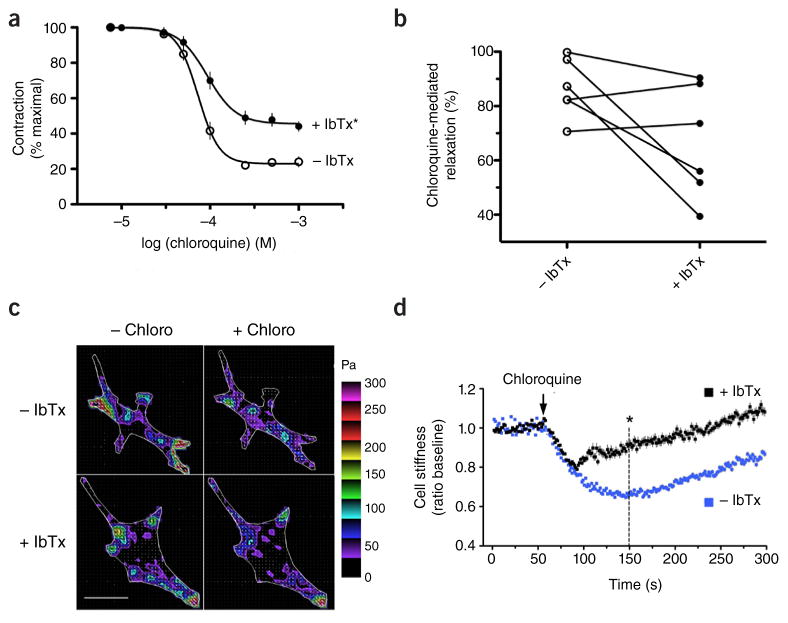Figure 1.
Airway smooth muscle responses to the TAS2R agonist chloroquine are sensitive to the BKCa antagonist IbTx. (a) Mouse airway relaxation in response to chloroquine in the absence (control) or presence of 100 nM IbTx. Results are from nine independent experiments. *P < 0.05 versus control. (b) Human airway relaxation due to 500 μM chloroquine in the absence (control) or presence of 100 nM IbTx. Shown are the individual results from six rings derived from two subjects. Data are scaled to the maximal response in the group. For experiments in a and b, airway rings were studied in a lateral isometric myograph, with baseline passive tension set at 5 mN, and then contracted with 100 μM methacholine. (c) Representative traction maps of single human airway smooth muscle cells determined by Fourier transform traction microscopy. The colors represent the magnitude of the regional tractions in Pa indexed to the color bar at the right. Results are representative of four experiments. Scale bar, 40 μm. (d) Quantitative measurements of cell relaxation ascertained by magnetic twisting cytometry. Results are from individual measurements from 717 cells exposed to 1.0 mM chloroquine alone (−IbTx) and 808 cells pretreated for 30 min with 100 nM IbTx followed by exposure to 1.0 mM chloroquine. Data are from five independent experiments and are shown as mean ± s.e.m. *P < 0.001 versus −IbTx at 90 s after chloroquine exposure (the 150 s point of the y axis). These studies were approved by the Institutional Animal Care and Use Committee of the University of Maryland and the Institutional Review Board of Johns Hopkins University. Tissues in b–d were from discarded surgical specimens.

